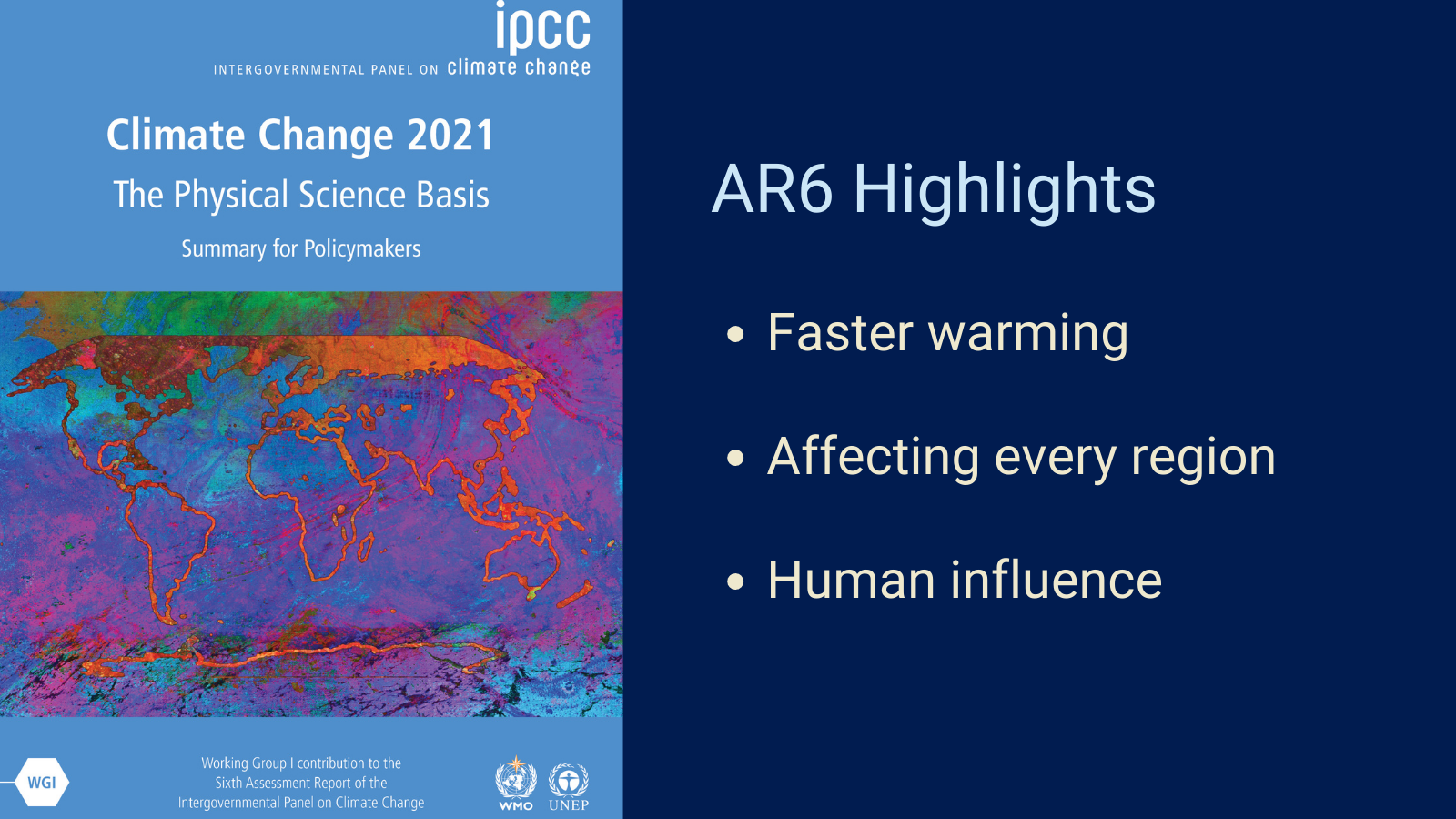The first part of the Sixth Assessment Report (AR6) published by IPCC explains the role of humans on climate change and the latest understanding of climate science and technology. It also reasserts the influence of human activities on climate change and urges immediate actions to limit greenhouse gases emissions.
Below are some highlights from AR6:
Faster warming
- Increase of about 0.1°C in the estimated warming since 1850–1900 in AR6 compared to AR5.
- Averaged over the next 20 years, global temperature is expected to reach or exceed 1.5°C of warming.
- unless there are immediate, rapid and large-scale reductions in greenhouse gas emissions, limiting warming to close to 1.5°C or even 2°C will be beyond reach.
Affecting every region
- AR6 for the first time provided a detailed regional assessment of climate change
- Projects that in the coming decades climate changes will increase in all regions
- For 1.5°C of global warming, there will be increasing heat waves, longer warm seasons and shorter cold seasons. At 2°C of global warming, heat extremes would more often reach critical tolerance thresholds for agriculture and health.
Human influence
- The AR5 stated that ‘human influence on the climate system is clear’ and assessed that human influence had been detected in changes in some climate extremes. In AR6, it is concluded that it is an established fact that human influence is the principal driver changes in climate system, and that that human-induced greenhouse gas emissions have led to an increased frequency and/or intensity of some weather and climate extremes since 1850.
- The AR5 assessed that anthropogenic influences have likely affected the global water cycle since 1960. The dedicated chapter in the AR6 WGI (Chapter 8) concludes with high confidence that human-caused climate change has driven detectable changes in the global water cycle since the mid-20th century, with a better understanding of the response to aerosol and greenhouse gas changes. The AR6 WGI further projects with high confidence an increase in the variability of the water cycle in most regions of the world and under all emissions scenarios.



